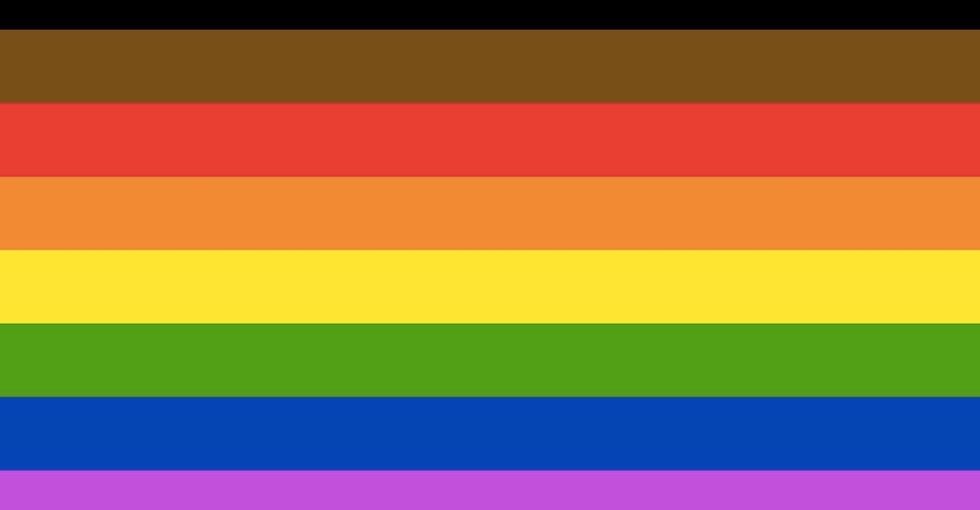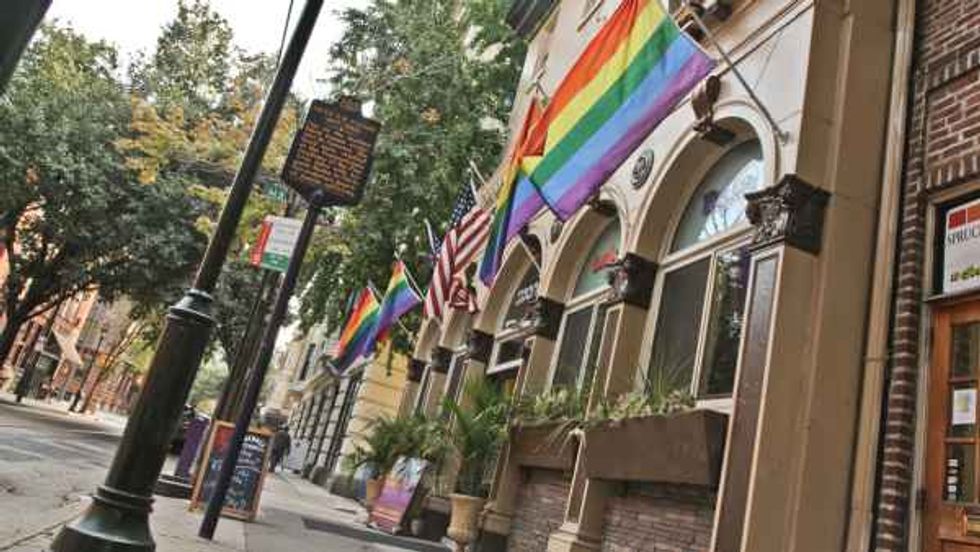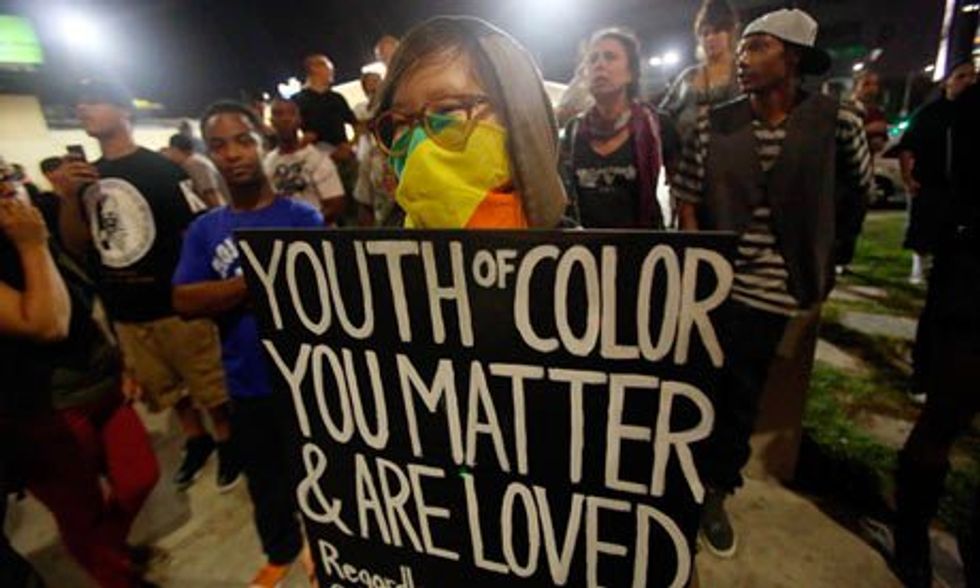It's important to realize that queer people of color have different experiences in the LGBTQ community.
Within this past month, Philadelphia's office of LGBT Affairs and a design firm, Tierney, unveiled the new pride flag- with added black and brown stripes, to represent people of color who have been marginalized and ignored in the past. As you can probably imagine, this new flag has brought up a lot of controversy- but in my opinion, I believe it is a good thing.
I've heard (mostly white) people complain that "The LGBTQ community has nothing to do with race" and "Why are we bringing race into this?"
I have one word for you: intersectionality.
In case you are unaware, intersectionality is the idea that we all have different facets to our identities, whether it be sexual orientation, race, gender identity, social class, etc. and that these intersecting identities contribute to the systematic oppression and discrimination of certain minorities. For example, a black transgender woman may face more oppression and discrimination than a white, gay, cisgender male.
By applying a framework of intersectionality to look at the LGBTQ community, one can begin to identify that queer people of color/low-income queer folks are more oppressed and ignored than white, affluent gay men and lesbian women. It is obvious that QPOC should be advocated/recognized for as much as any other member of the LGBTQ community, but historically, this has not been the case, especially in Philly.
The history of racism in the LGBT community
The "Gayborhood" in Philadelphia is notorious for discrimination against queer people of color. Last year, the owner of a bar called ICandy was recorded saying racial slurs to his employees about certain customers. In February, bars like Woody's and Tavern on Camac were accused of creating vague dress codes to discriminate against minority customers. As a result, 11 bars and two non-profits had to undergo anti-racism training.
However, this is not a new phenomenon. Racism has a storied past in the LGBTQ community. Both the homophile period (1951-1969) of activism and the gay liberation period (1969-1980's) were focused around meeting the needs of gay, white men, and later- gay, white women. QPOC and transgender people were essentially ignored and discriminated against, even today.
What most people forget is that LGBT politics and rights as we know them today would not be possible without LGBTQ people of color. The Stonewall riots were started by transgender women of color, including Sylvia Rivera and Marsha P. Johnson. Without QPOC fighting for our rights, who knows where we would be?
Equality for all, not just for some
The LGBT community has only made the tremendous strides that we see today because of queer people of color, but historically, they were constantly overshadowed by other community members. QPOC need more inclusion and representation in the LGBTQ community, plain and simple- especially after the discrimination incidents in the Gayborhood this past year. Luckily, Philadelphia has recognized this, and decided to add the black and brown stripe as a symbol of solidarity.
This is a step in the right direction. People can hoot and holler about how racial issues shouldn't be mixed with sexuality, but I've got news for you- the world is not perfect, and unfortunately, racial issues are mixed with sexuality (intersectionality, remember?)
Racism exists everywhere, especially in the LGBTQ community. The LGBTQ community has been notorious for not being intersectional, but with this flag, the city of Philadelphia hopes to change that.
As a community, we need to battle racism internally and externally. We need to discourage discrimination, misrepresentation and violence against QPOC.
We need to demand equality for ALL, not just for affluent community members. I for one, am proud to live in a city that has taken the proper steps to move towards a more inclusive environment for everyone.









 The minimum wage is not a living wage.
StableDiffusion
The minimum wage is not a living wage.
StableDiffusion
 influential nations
StableDiffusion
influential nations
StableDiffusion












